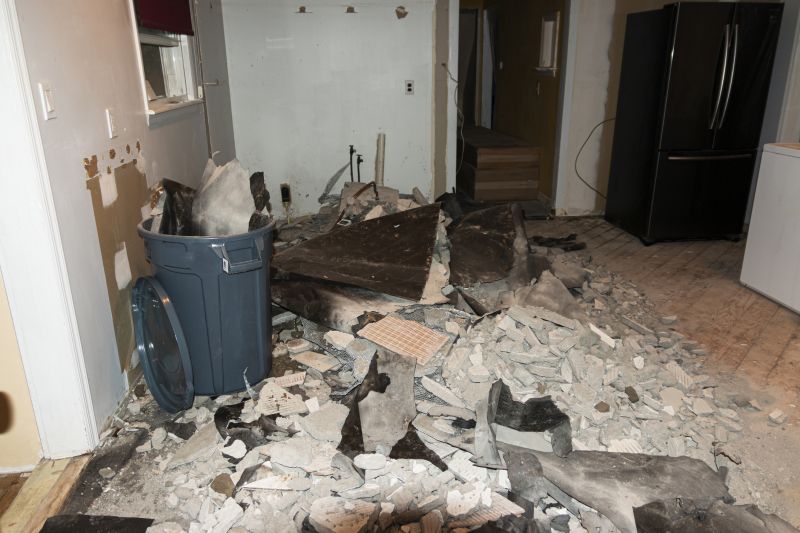Favorite Fire Restoration Tools For Home and Business
Equip yourself with essential supplies that facilitate thorough fire damage assessment and restoration efforts.
 Fire restoration is a critical process that involves carefully removing soot, smoke, and water damage caused by fires. Effective restoration begins with assessing the extent of damage and selecting appropriate products to facilitate cleaning, deodorizing, and rebuilding. The right tools and supplies are essential for restoring properties safely and efficiently, especially in regions like Palm City, FL, where fire incidents can impact homes and businesses alike.
Fire restoration is a critical process that involves carefully removing soot, smoke, and water damage caused by fires. Effective restoration begins with assessing the extent of damage and selecting appropriate products to facilitate cleaning, deodorizing, and rebuilding. The right tools and supplies are essential for restoring properties safely and efficiently, especially in regions like Palm City, FL, where fire incidents can impact homes and businesses alike.
Top Overall Option
Multi-Purpose Fire Damage Restoration Kit
A comprehensive kit designed to address various aspects of fire damage, including soot removal, odor neutralization, and water cleanup. It typically contains cleaning agents, deodorants, and protective gear, making it suitable for both DIY enthusiasts and professionals seeking an all-in-one solution.
Types of Products For Fire Restorations
Soot and Smoke Cleaners
Specialized cleaning agents formulated to break down soot and smoke residues on various surfaces.
Odor Neutralizers
Products designed to eliminate or mask persistent smoke odors from indoor environments.
Water Extraction Equipment
Tools such as wet/dry vacuums and pumps used to remove excess water from water-affected areas.
Air Scrubbers and HEPA Filters
Devices that filter airborne particles, including soot and mold spores, improving indoor air quality.
Dehumidifiers
Equipment used to reduce moisture levels and prevent mold growth after water damage.
Fire-Resistant Drywall and Building Materials
Specialized materials that resist fire and help in rebuilding efforts.
Protective Gear
Personal protective equipment such as masks, gloves, and coveralls for safety during restoration work.
Deodorizing Sprays
Sprays formulated to neutralize lingering smoke smells on fabrics and surfaces.
Cleaning Cloths and Sponges
Absorbent and durable tools for manual cleaning of affected areas.
Thermal Foggers
Devices that disperse deodorizing agents deeply into affected areas to neutralize odors.
Paints and Sealants
Fire-resistant paints and sealants used in the rebuilding process to prevent future damage.
Mold Inhibitors
Solutions that help prevent mold growth on damp or damaged surfaces.
Vacuum Systems with HEPA Filters
High-efficiency vacuums for removing soot and debris from surfaces and carpets.
Chemical Sponges
Non-abrasive sponges used to lift soot without smearing or spreading residues.
Fire-Resistant Insulation
Insulation materials that provide added fire resistance in rebuilding efforts.
Popular Choices
Effective for manual soot cleanup on walls and ceilings.
Gels that absorb and neutralize smoke odors in enclosed spaces.
High-capacity air filtration units to improve indoor air quality during restoration.
Powerful equipment for removing water from flood-affected areas post-fire.
Sealants used to contain soot and prevent further contamination.
Devices that disperse deodorants deeply into affected areas for comprehensive odor control.
Essential safety gear for workers handling fire-damaged materials.
Specialized solutions for cleaning soot from furniture and fixtures.
Equipment to reduce moisture levels after firefighting efforts.
Building materials suitable for replacing damaged walls.
Sprays designed for quick application on fabrics and surfaces.
Vacuum systems with high-efficiency particulate air filters for soot removal.
Equipment used to distribute deodorizing fogs into hard-to-reach areas.
Paints formulated to resist ignition and slow the spread of fire.
Products that inhibit mold growth on moist surfaces.
Durable cloths suitable for scrubbing soot and residues.
Restoration products range from specialized cleaning agents to equipment designed to neutralize odors and prevent mold growth. These products are formulated to handle various surfaces, including drywall, wood, fabrics, and metals. Proper application and use of these items can help mitigate further damage and restore a property to its pre-fire condition.
Choosing the right fire restoration products involves understanding the specific needs of each project, including the type of damage, materials involved, and the severity of soot and smoke residues. Professional-grade supplies often provide more effective results but require proper handling and safety precautions. Whether for DIY restoration or professional use, selecting quality products ensures thorough cleaning and deodorization, ultimately helping property owners recover from fire-related incidents more smoothly.
Key Buying Considerations
- Assess the extent of fire and water damage to determine necessary products.
- Choose products compatible with the surfaces involved in the restoration process.
- Prioritize safety features, such as non-toxic ingredients and protective gear.
- Consider the effectiveness of odor neutralizers for long-lasting results.
- Evaluate the capacity and size of equipment like water extractors and air scrubbers.
- Look for products that are easy to apply and suitable for your skill level.
- Check for compatibility with existing building materials and surfaces.
- Determine if professional-grade products are needed for severe damage.
- Review product instructions and safety precautions before use.
- Consider the environmental conditions of Palm City, FL, such as humidity levels, which may affect mold prevention.
- Select versatile products that can handle multiple aspects of fire restoration.
- Factor in the availability of replacement parts or refills for equipment.
- Ensure products are compliant with local safety and building codes.
- Think about storage and handling requirements for chemical-based products.
- Opt for products with clear labeling and detailed application instructions.
This content contains affiliate links and is for informational purposes only. Always follow manufacturer instructions and consult professionals for fire restoration projects.
